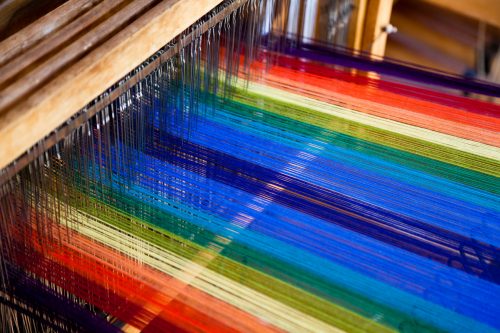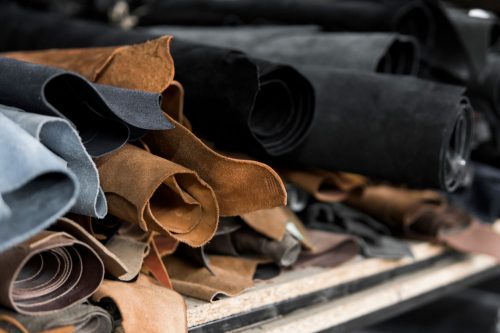A mosaic is a pattern of irregularly shaped pieces all fitted together to cover a surface. Mosaics can make distinct pictures or shapes out of thousands of smaller pieces, but they don't have any discernible pattern. This fantastic form of artwork can be added to dull spaces, but on what surface can you add a mosaic? We've done the research and have the best information for you!
Mosaics can be added to just about any non-mobile surface that doesn't expand or contract too much with temperature differences. The area must be clean and free of loose paint, wallpaper, or other detritus that might make the surface anything other than smooth. The type of surface your choose will change the type of adhesive used to hold the mosaic and whether or not the completed project will be outdoors or indoors.
Now that you know a mosaic can adhere to any non-mobile surface, let's talk about the most popular bases for mosaics and the best adhesive to use for each. We'll also discuss some other questions you might have. Continue reading!

What Surfaces You Can Mosaic On
Wood
A wood base for mosaics works best for indoor projects. Wood can expand and contract a bit with the temperature, so this is best kept in a temperature-controlled environment. The best type of adhesive to attach the mosaics is silicone-based, as this type of adhesive has some flex to it and can handle if the wood changes size a bit. The wood does need to be primed or sealed before starting the mosaic.
Here's an example of a project where someone sealed a wooden log and created a mosaic table on top:
What materials can be used to make mosaics? Read our post about that!
Cement
Cement is a popular surface as it's used as the base for many showers with tile, so it's a natural to hold mosaics. Because it is very sturdy, cement makes an excellent base for outdoor mosaics. Making mosaic stepping stones is an excellent use of cement and mosaic and adds a splash of color to any walkway. Be sure to use an outdoor-friendly adhesive that is cement-based, or lay tiles directly into the cement while wet.
Check out this video on how to make outdoor mosaic stepping stones and start planning your next project:
Terracotta
Surfaces made of terracotta are tough and weather-resistant, although they expand and contract a bit more than cement; sealing the base first can help some of the material shiftings. For terracotta, something like Weldbond works exceptionally well, or another cement-based adhesive.
As most flower pots are made of terracotta, consider creating your own custom mosaic terracotta planters.
Glass
Glass can make a gorgeous surface for mosaic, but adhering the pieces can be difficult. Glass on glass is particularly hard. For this type of project, it's best to use a clear silicone adhesive or Weldbond. Ensure the surfaces are clean and prepped well before attempting this type of mosaic. At times, clear silicone can have bubbles. Ensure to press down well and have a wooden skewer handy to take care of any errant bubbles.
A lot of light fixtures and wall sconces are made of mosaics with a glass backing. Additionally, many lovely vases are made with mosaics. If you're feeling adventurous, give it a shot.
Metal
A background of metal can make a solid base. However, before mosaic pieces can be attached, the metal's surface would need to be sanded or scoured to give it some grip. Metal also can't handle a large amount of weight, so keep this in mind when planning your project. The best adhesive for metal mosaic is a two-part epoxy.
Check out this video on creating a mosaic on a metal table:
Styrofoam
Creating a mosaic on a styrofoam surface is a great project if you're looking to make something three-dimensional. Sometimes this can be tricky because a lot of strong adhesives will eat into the styrofoam and dissolve it, decreasing the life of your creation. If you're planning on keeping the project indoors, Weldbond applied directly to the surface works well. If you're planning on something outdoors, apply wire mesh around the project, and then apply a layer of cement as your base.
Many use styrofoam to make decorative gazing balls or garden balls, a fun, simple project to undertake.
What kind of grout do you use for mosaics?
To grout the mosaic project, you can use cement-based or epoxy grout. Epoxy grout is preferable because it withstands more temperature changes than standard cement-based grout and is stain resistant. Epoxy grout can withstand a variety of conditions, so it really is the best bet.
View this epoxy grout on Amazon.
If you're new to grouting mosaic tile, sometimes a pre-mixed cement grout is the way to go, as it's easy to apply and doesn't require a lot of prep.
Overall, a lot of consideration should go into where the mosaic will live and the conditions it might face.
To read more about which grout is best for your project, check out our post, "What Kind of Grout to Use for Mosaics."
Do you need backing for mosaics?
Having a backing on your mosaic is necessary if the surface on which you've assembled your mosaic is in any way flexible. As mosaic materials, grout, and most adhesives cannot flex without cracking, you want to have a base (or a backing added to the base) that is completely inflexible. To maintain the integrity of your project, you do not want it to bend at all.
How do you finish the edge of mosaic tile?
The best option to finish the mosaic tile edge is to start by uniformly applying the outside edge. When you apply the rest of the design, it can overlap the edging material so that you still have an even edge. This keeps the overall look of your project uniform.
If this option isn't possible or doesn't appeal to you, there is the option of applying a caulk or grout line to the outside edges to conceal anything that looks uneven or jagged. Caulk should be used minimally as it can distract from the overall appearance of your project.
How do you seal outdoor mosaics?
Two types of sealants can be used on outdoor mosaics. One is penetrating and absorbs into the surface of your mosaic. The other forms a protective membrane on the surface of the project. If you don't want anything to be visibly different after your mosaic, use the penetrating sealant, as a sealant with a protective coating will change the sheen of the finished creation.
View this sealer on Amazon. View this sealer on Amazon.
How do you prepare wood for mosaic?
The best way to prepare wood for mosaic is by sanding and then applying primer before attaching the mosaic pieces. Spend plenty of time sanding the area so there are no longer any rough edges on which to get splinters. If well-prepped, wood makes a great surface to mosaic.
In Closing
There are so many surfaces to choose from when deciding on what to create a mosaic. With some creative thinking and planning, just about any project is possible. Enjoy making something beautiful!













![Read more about the article What Is The Best Resin To Use For Molds? [5 Suggestions]](https://craftsbliss.com/wp-content/uploads/2020/10/Pouring-white-glitter-resin-into-mold-500x333.jpg)
I want to make a large round outdoor mosaic to hang on house. What is my best substrate?
Thank you for the great information. I wondered why moving from California to rainy Oregon;heat to freezing my table literally fell apart in one freezing wet season. One of my favorite pieces I worked on was the Outside Bistro Table. Next time … Enjoyed learning of new products. Humbly Cynthia
I made outdoor mosaics on primed wood , using thinset as adhesive but regular grout sealed with impregnable sealer, but tiles and grout are coming lose in large areas. Help!